Spidey + capecomic history sideblog.Posts mostly about 616, Spider-Verse, Raimi, and TSSM.Otto Octavius and Norman Osborn should tear each other apart for my amusement
Don't wanna be here? Send us removal request.
Text
>looking for a new longrunning franchise >ask a member of the fandom if their longrunning franchise is political or just "political" (I.E. presenting a stock rebels vs. Empire dynamic in a vague enough way that literally any group who can self-construct as the political underdog can plausibly project themselves onto the heroic rebels) >they dont understand
>I pull out illustrated diagram explaining what is political and what is "political" >they laugh and says “it’s very political sir” >pirate the show via illicit sites >its presenting a stock Rebels-vs-Empire dynamic in a vague enough way that literally any group who can self-construct as the political underdog can plausibly project themselves onto the heroic rebels
184 notes
·
View notes
Text

I got this ask on main but thought I'd pick it up here, my comics history/fashion ramble blog. I'd been wondering this exact same thing recently, and Google initially wasn't much help—Rocketeer replica jackets describe themselves only as "Rocketeer jackets" and the one Lobster Johnson cosplay thread just suggested ordering one of those.

The most curious part is the double seam and horizonal row of buttons that mark out the entire front as possibly being an unbuttonable "bib", like a plastron front. (Please don't ask how late in the game I worked out that "plastron" is the right word for that.)
The closest genuine Golden Age example of a plastron jacket I found was the military tunic style uniform of Blackhawk, created in 1941.

(Pics from the '52 movie serial (right) really show how awkward it is to combine open lapels + plastron. On a double breasted coat, that chest panel IS the bottom lapel, folded shut.)
Here's the thing: This outfit mirrors that of the Nazi ace pilot he fights in the origin issue, von Tepp (middle). And compare further to the far right: real life WWI flying ace Manfred von Richthofen, AKA the Red Baron, in imperial German Uhlan (lance cavalry) uniform.
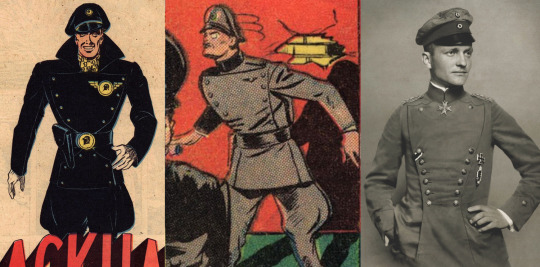
"The Germans had designed such great costumes, we decided to use them ourselves," co-creator Cuidera is quoted as saying in Steranko's History of Comics, which (more dubiously, in my opinion) compares the look to the Gestapo or SS. Breeches or jodhpurs weren't strictly a Nazi thing at the time, but they do add to the overall effect.
Compare two other military tunic themed costumes from 1940, on Captain Marvel and Bucky Barnes. These are asymmetrically buttoned, and switch to a more classic circus strongman look below the waist.

But somewhere around 1975, with the Invaders book, Bucky gets a buttoned bib! There's something infectious about it—the symmetry, maybe. (Even re: the characters we started with; Mignola didn't draw Lobster Johnson with buttons down the right side, but every artist after does. And Spider-Noir wore a sweater under his coat until Shattered Dimensions introduced the double-breasted vest.)
If it didn't reach his belt, Barnes' button-on front + shirt collar combo would resemble a bib-front western shirt, like the one that became the Rawhide Kid's signature look in '56. (Or Texas Twister's in '76.)
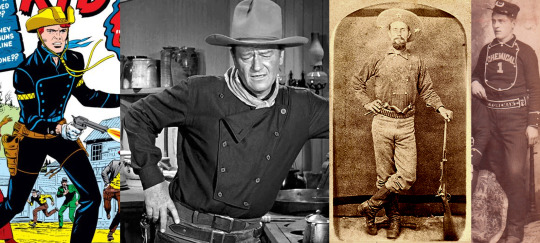
This shirt entered the old-West-obsessed public imagination in the 1940s/50s largely because John Wayne wore it in several cowboy movies. In reality it was rare among cowboys, more common with firefighters and civil war era militia.
Military tunics, Western shirts, alright, but does anything match the style and material and era, or are these jackets a total anachronism? I tried looking into 1930s leather flight jackets and was surprised when the closest-looking results were marked as Luftwaffe.
It took me a bit to work out why: USAF and RAF issued standard flight jackets with a center closure. The Luftwaffe instead let their pilots buy non-standardized ones. The 'weird' double-breasted black German flight jackets were in fact fairly normal (but repurposed) motorcycle racing jackets.
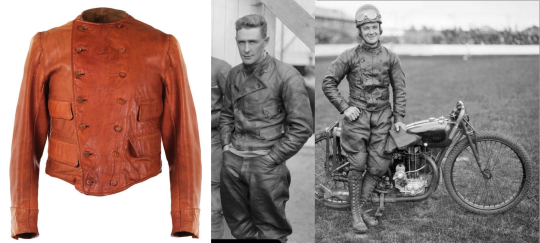
Far left is an English biker's jacket that dates back to the 1920s. Even without the bib, this may be as close as you'll get to an authentic Rocketeer. The jodhpurs were pretty common to complete the look. (What was an early motorcycle anyways, if not a weird metal horse?) The first biker jacket with the now iconic off-center diagonal zip was designed in America in 1928 and yet as far as I can tell, not a single actual pre-war pulp hero wore one.
The greatest weakness of this post is that I haven't been able to find any of these artists' notes on how, exactly, they arrived at similar versions of this iconic Pulp Front Panel Jacket. I'm sure I've missed some things. But as far as I can tell, this jacket is an odd bit of convergent stylistic evolution from the above influences that's picked up enough momentum to now be self-perpetuating.
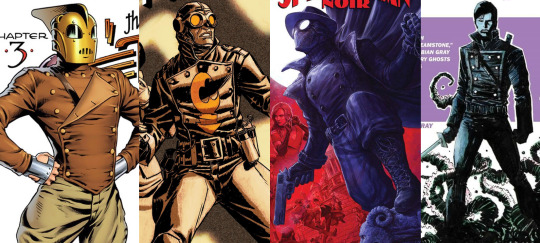
The problem with pulp heroes is that for the most part, they just wore clothes. The appeal of this jacket is actually very similar to what the 1940s thought the appeal of the bib-front shirt in westerns was: It's alien enough to feel "old". It looks like something invented before zippers or synthetic fabrics. It looks formal and militant but also renegade, rebellious. It also looks a little mad-sciencey*. It's a costume, but you can nearly fool yourself into thinking the past was weird enough that you could find something this cool on the rack.
If I wanted to end on some grand point, I could try to argue that there's a thematic throughline between fascist fashion, John Wayne movies, and throwback pulp. A manufactured aesthetic valorizing the violence of a fictional golden age... but I think the noir stylings of the post-Rocketeer comics in this lineup mean that, at least on some level, they know the "good guys" didn't dress like this.
*If I had another couple weeks of time to burn, I'd try to trace the visual history of the Howie coat in popular culture and investigate its possible connections to this. Alas, I do actually have a life.
187 notes
·
View notes
Text
I think the big issue with the mutant metaphor or other such attempts at allegory for diverse characters in the modern day is that you can now tell stories about racism with black people. It isn't the 60s anymore where the comics code authority was very cautious about that kind of thing. You can put gay people in a comic. Scott Summers does not need to experience fictionalised racism anymore, you can actually center on the people with those experiences. And as we do get more stories by black authors and by queer authors, both those about oppression and those that are not, it becomes increasingly ludicrous that the mutant metaphor actually has any use, particularly when it increasingly becomes treated as the only axis of oppression that matters with intersectional characters.
These kinds of metaphors and analogies had their use in a time where the kinds of stories you could tell were more regulated, but it is the year 2025 and I do not need to see Rogue go like "Wow, I can't believe they made a MUTANTPHOBIC HORROR MOVIE 😱😱😱" as if this is the first and worst time this has ever happened. I find it really obnoxious but equally I don't really know how they could fix it. Like, the metaphor has served its purpose. We can move on now. But the iconography of the characters remain and you can't really separate it from them, even when it becomes ever more unwieldy in a post-comics code authority comic book world.
#kamala khan#her original run is very dear to me and then it does kind of... drop off into a weird lore-heavy teenage girl joke eventually.#trying to hit the same emotional beats with purely in-universe politics.
335 notes
·
View notes
Text
Jim Shooter, The Great Gatsby of Comics. RIP.
10 notes
·
View notes
Text

The Question
Art by Denys Cowan
251 notes
·
View notes
Text
also jim shooter paved the way for women at marvel both inside and outside of comics from his championing of dazzler’s solo (unprecedented for a woman to have a solo after such minimal engagement with a major series; she’d only appeared in UXM 140 prior) to his welcoming writers like jo duffy and louise simonson to write quote unquote “high profile” series like power man & iron fist and power pack. during our time together, i remember him saying “did i think power pack was gonna be the new spider-man? no. but weezy wanted to do it, so why the hell not? who was i to stop her?”
47 notes
·
View notes
Text
it's always crazy reading any description of how to get hired by the Big Two as a writer nowadays knowing that Jim Shooter was a whole 14 years old when he sent in a Legion of Superheroes pitch he wrote during recess and became the book's main writer
452 notes
·
View notes
Text
Just found out they would call Jim Shooter "Trouble Shooter" because he was the editor and I just find that so adorable.
68 notes
·
View notes
Text
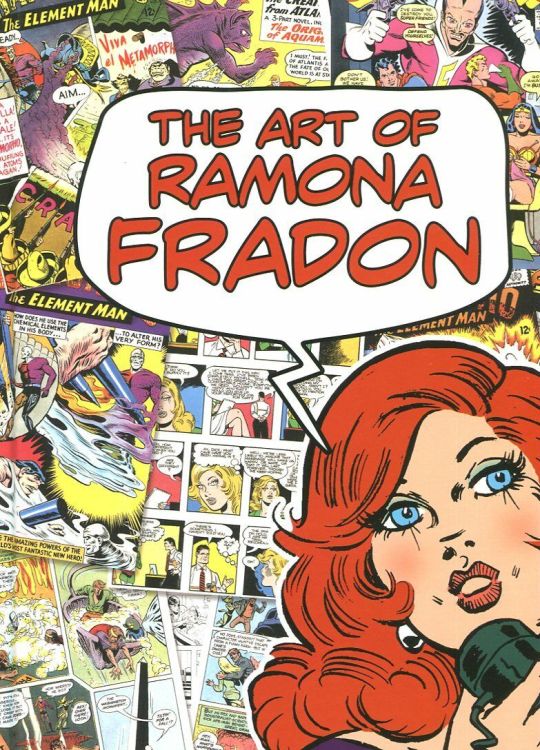

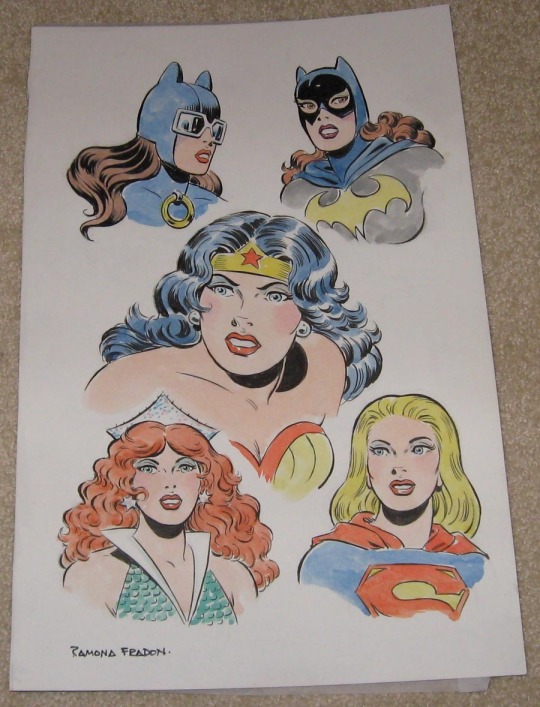

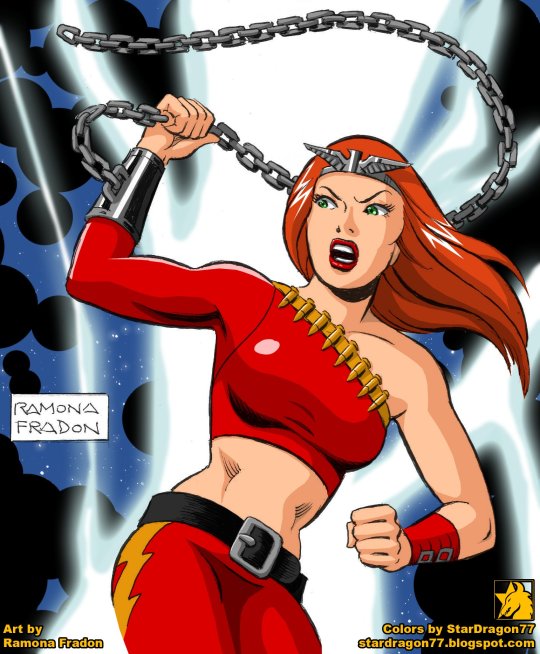
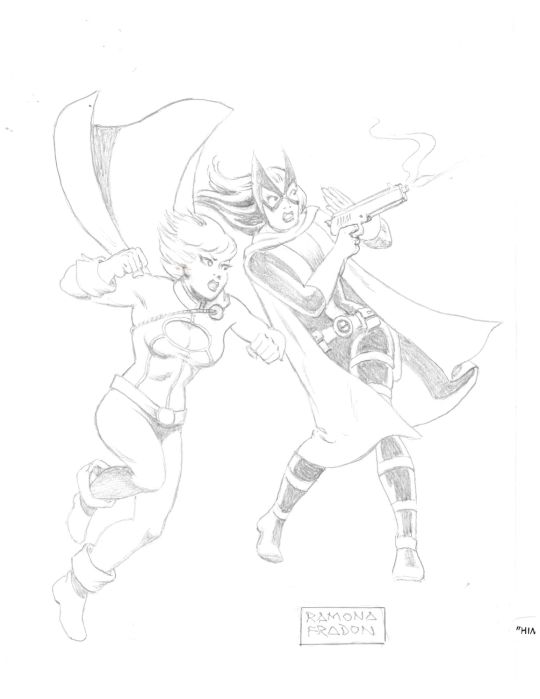

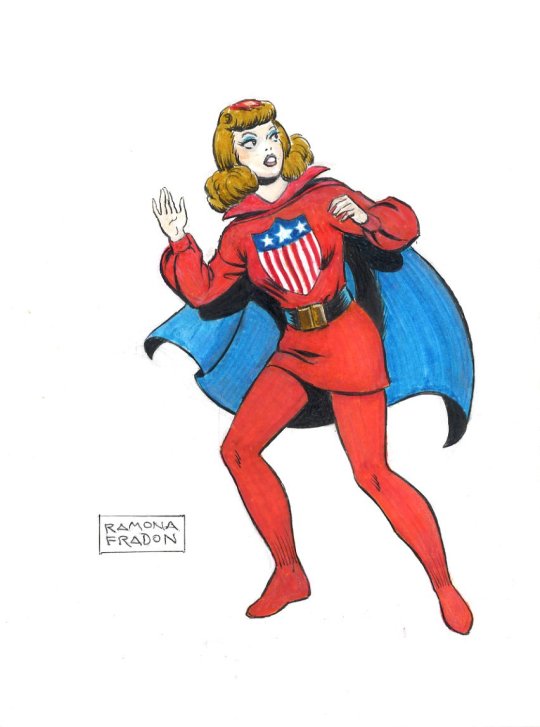


The Art Of Ramon Fradon
The Women Of Comics
562 notes
·
View notes
Text
ok one of the reasons i am disenchanted with conversations about comic book writing that center on continuity or 'reading older comics' is bc i think complaints about failures of continuity or 'not knowing a character' are kind of the default way a lot of comic fans complain about writing they don't like. and, well, one of the comic writers i find most frustrating is gerry duggan, who you certainly cannot accuse of not knowing x-men comics! he frequently references older comics in his work, and not just the hits! he's referenced judgement war before, for example. and i have seen people complain about him not having a comprehensive knowledge of x-men! which, imo, is not the problem! he does have a lot of context! but him having that context and iterating on it still does not really make comics i personally find very compelling! and while that is partially bc of the way he utilizes his references and where he pulls from for x-men, its not because he doesn't know comics.
67 notes
·
View notes
Note
I've been reading through some of your old asks since I remembered you were where I heard about Worm, and recently you wrote about how "deconstructions" of the superhero genre are often uniformed and lazy pastiche from people who seem to have not bothered engaging seriously with the source material. (There's a great quote from Ursula Le Guin about writers and critics all too often disregarding genre fiction, hence why the literati alll thought Harry Potter was original back in the day)
But you made the point that big two comics have been dealing with most of the plot holes in the genre for decades, and cited a few specific examples. I'm by no means a new comer to comics but I've largely stayed away from big two, and so I'm wondering, if you are so inclined, if you could share what you consider "required reading" to help me get started?
It seems like a fascinating thing to read about, and I love tracing genre histories.
Yesterday I finally finished a long long rec-list for @worlds-smallest-creature, which was a mix of foundational texts and stuff I personally thought was neat. I'm going to pare down and amend the list to ten comics that are particularly useful for getting a feel of the Big-Two space; comics that, if you read them, will instantly make significant portions of the references and in-jokes much more legible. Note that this does not universally map to high quality, ( though it does for most of them) just utility for understanding the genre and the space as it stands:
Watchmen: By Alan Moore and Dave Gibbons. The big deconstructionist comic, most directly in conversation with the two-and-a-half generations of superheroes that had been published when it first came out in 1985. This is the comic all other superhero deconstructions have been chasing and it's tonally informed basically everything that's come after.
Batman: The Dark Knight Returns: Frank Miller and Klaus Janson. The other big deconstructionist superhero comic of the 1980s. While nothing in it is actually canon, it hugely (and arguably negatively) informed the writing of Batman as a dark-gritty-anti-hero and gave rise to the endemic "Batman vs Superman in a fight to the finish" thing; like Watchmen, it's also a rumination on what went unsaid politically in the Silver Age of Comics. Huge amounts of the Batman Mythos are either repudiating this or parroting this, for better or for worse.
Marvels: Kurt Busiek and Alex Ross's gorgeously painted retelling of the first 30 years of the history of the Marvel Universe from the perspective of a photojournalist, from the first appearance of superheroes in the 30s to roughly the start of the Bronze Age. In addition to being a comic about the existential horror of being a normal person living in a world with Big Two superhero dynamics, it's also an excellent primer of the major players and plot beats from the front half of Marvel's publication history.
JLA/Avengers by Kurt Busiek and George Perez: One of the last intercontinuity crossovers published by Marvel and DC before they started circling the wagons on their respective IP. A major thrust of the piece is the two teams reacting with horror to the business-as-usual of their counterparts universe, in a way that's meant to highlight the historical differences in writing trends between the two; it also contains basically Every Single Superhero Who'd Ever Been Published Up Until 2004, making it a pretty useful who's-who birdspotting guide of both settings.
Astro City by Kurt Busiek, Brent Anderson and Alex Ross: An anthology series set in a constructed pastiche Big-Two universe, following the lives of dozens to hundreds of characters as they make their way in the titular Astro City, the longstanding superhero capital of the world. Because the setting contains direct pastiches (and therefore commentary) on basically every significant Hero and general archetype who shows up in both Marvel and DC, and because every one-or-two issue vignette is usually in direct conversation with a specific trope or standing question raised by those characters and those settings, blowing through as much Astro City as you can will allow you to infer huge chunks of the decades-long history that it was written in conversation with- the type of characters who were published in each decade, the type of adventures they were going on in the 60s vs the 30s vs the 90s, and so on.
(Is this three things in a row by Kurt Busiek, you ask? Yes, because he's basically the on-call "thoughtfully root around in the guts of the architecture of Big Two Superhero Comics" guy.)
JLA (1997) By Grant Morrison and Howard Porter. This one was an ongoing, and it presents an interesting balancing act between being, essentially, a platonic example of the thing- no aggressive deconstruction, just a through and through superhero comic that balances accessibility to new readers, high-quality, high concept stories, deliberately enmeshing itself in remixed high-context deep-cuts from the silver-age, and having all sorts of odd little inscrutable asides that are the result of weird decisions being made in other books. Superman's blue and has lightning powers, roll with it. There's an Angel From The Actual Bible hanging around because they couldn't get the rights to Hawkman, roll with it. This thing is essentially training wheels for the reality that almost any big-two ongoing worth reading for any reason is doomed to be jerked around and informed by the larger editorial context at the time, which you might only know bits and pieces of going in; a sufficiently gripping comic will reel you in regardless.
Uncanny X-Men by Chris Claremont and a whole bunch of artists. Claremont's run from the 70s to the 90s was a development site of a huge number of enduring cape tropes- in particular a lot of the ones related to superpowered factionalism, dialing in on relatively specific and well-defined powersets applied to problems in a puzzle-logic kind of way, shoring up the "Mutant Metaphor" as a parallel to civil rights movements, and a lot of stuff related to bad futures and time travel. By virtue of the amount of time he spent in creative control of the book it coheres better than the average big two thing (though that's not necessarily the same thing as it being universally good.) To this day the genre is plastered in the thumbprints of Days of Future Past and The Dark Phoenix Saga, so those will both be useful context.
Ultimate Spider-Man by Brian Michael Bendis and Mark Bagley. A reboot and retelling of Spider-Man for a 21st century audience, which was so meteorically successful that the Ultimate Universe- a condensed, lean, and heavily politically barbed reboot of all of Marvel's major properties- was spun off from it. On top of being a very good comic, Bendis's background in crime fiction writing, decompressed style and ear for naturalistic dialogue became something of a house style at Marvel for a while and heavily influenced the space generally; the DNA of this one can be found all over the place. This remains probably the best self-contained Spider-Man run ever produced.
The Authority By Warren Ellis and Bryan Hitch. The premiere cool new superteam of the late 90s/early oughts; paradoxical revolutionary authoritarians willing to lay waste with abandon to all the evils of the world that normally go untouched or get off with a slap on the wrist. This book was extremely stylistically important in its embrace of a cinematic 'widescreen" pacing intended to make the comic feel like a breakneck blockbuster movie, and significant chunks of what was to come over the next decade ate its lunch stylistically. This team evolved out of Stormwatch, a Jim-lee 90s-antihero outing that Ellis took over with issue 37, hollowed out and wore like a skinsuit in order to write the same kind of genre commentary spec-fic story he liked to. Ellis's work on that run is useful context for The Authority, and a pretty good read, but not strictly necessary.
The Ultimates V1 and V2 By Mark Millar and Bryan Hitch. Millar was the guy who took over The Authority from Ellis after issue 12, and The Ultimates- the version of the Avengers created for the above-mentioned Ultimate Universe- was his attempt to create a superhero team with essentially the reverse characterization from The Authority. Where The Authority were quasi-left-anarchist mavericks willing to coup the president if that's where their fight against evil took them, The Ultimates were characterized as a gaggle of incompetent, jingoistic stooges who solved only slightly more problems than they personally created, backed Bush to the hilt with the illegal invasion of Iraq, and represented a massive escalation in an international superhuman arms race that was implied to be on course to end the world. Because of the book's massively uncharitable characterization of literally every member of the Avengers lineup with the exception of Thor, and because of Millar's deep-seated edgelord sensibilities, this book is regarded poorly by many. (I like it as satire.) However, it (and the rest of Ultimate Marvel) represent the single biggest aesthetic influence on basically every Superhero film of the 2000s onward and the MCU in particular- despite arguably being an aggressive attack on the enterprise the MCU would become.
I'll round the list out with Alias by Brian Michael Bendis and Michael Gaydos. This was Bendis's other keys-to-the-kingdom-granting outing at Marvel. A noire piece following Jessica "Jewel" Jones, a retired superheroine-turned-PI, as she roots around in the dirty laundry at the outer edge of the superhero community; similar to Astro City in how it uses "edge-case questions" about how superhero settings would work as the launchpad for sad (and frequently anticlimactic) little excursions about the Human Condition. The DNA of this one is also floating around in the space.
Happy Reading!
252 notes
·
View notes
Text
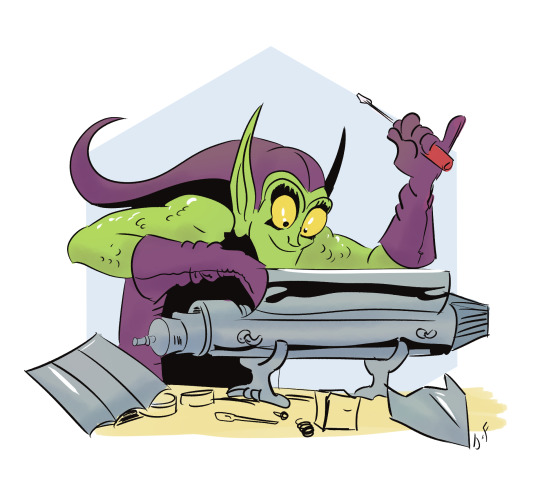
Working on his doohickey
150 notes
·
View notes
Text
It’s shit being a superhero when you know that the multiverse exists. You spend all day saving people, you’re tired, you want to go to bed, and right before you fall asleep someone says “The High Evolutionary is going to turn everyone on earth into a werewolf!” and every bone in your body says “Fucking. Maybe we can be the werewolf dimension. The Universe Where Everyone Is A Werewolf. There are infinite dimensions where everyone isn’t a werewolf. It could be fine. It could be good even.”
And you fight the High Evolutionary and you win and your world isn’t the Werewolf Dimension. But the thought was there. God the thought was there
23K notes
·
View notes
Text
Concept: Batfamily-style mob of young sidekicks and hangers-on, except the big name superhero they're ostensibly affiliated with doesn't exist, and in fact has never existed. They just got together and made up a dude based on a synthesis of pre-existing urban legends in order to benefit from the protection of "his" fearsome (and fabricated) reputation. Sometimes one of them puts on the suit and cowl and pretends to be the Big Guy to keep up appearances, which has been a near-disaster each and every time they've tried it; they're constantly two steps away from somebody putting the pieces together and kicking over the whole house of cards.
#.....#shazam#like. the modern shazamily. moreso in the variants where Billy is still the only one to get a fully adult powered form.
5K notes
·
View notes


